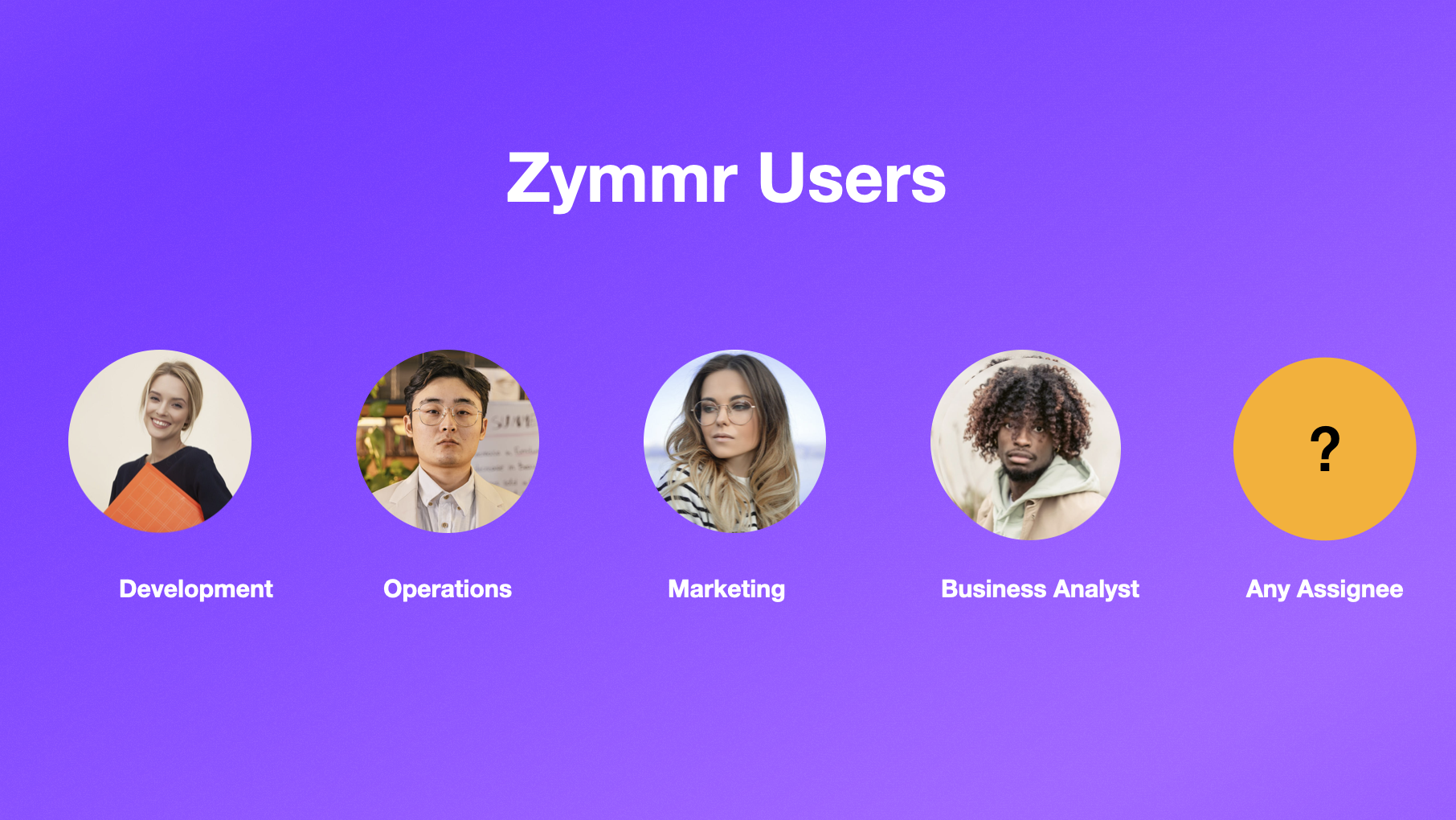Guide for Zymmr User
Welcome to Zymmr!
This guide is designed to get you up and running as a Zymmr end-user. We'll walk you through the key concepts and daily actions you'll perform, from finding your projects to updating your work.
Understanding Zymmr Users

A Zymmr user can be anyone from Development, Operations, or Marketing teams depending upon the type of project you are working on. Zymmr accommodates all types of users who actively make updates on WorkItems.
This guide is specifically designed for Zymmr users who:
- Work on WorkItems as Primary or Secondary Assignees
- Update WorkItem status
- Comment on WorkItems
- Log time on WorkItems
We assume that your Zymmr Admin has already configured the system and granted you access.
Prerequisites
🔑 To get started, your admin will need to set up a project for you and/or your team to work in.
What is a Zymmr Project?
A project is a container that groups different WorkItems together. This group of WorkItems could cover either:
- A single day's work
- Tasks that will take your team months to complete
Accessing Projects in Zymmr
Watch Video Tutorial
Finding Your Projects:
- After logging in, you'll be taken to the projects page
- Access projects from the top navigation bar
- Click on the "Projects" tab to see available projects
- Use the search function to find specific projects
Navigating to a Project:
- Click on your desired project
- This will take you to the project's backlog page
Working with WorkItems
What is a WorkItem?
A WorkItem in Zymmr represents a unit of work that can take various forms, including:
- Tasks
- Bug reports
- User stories
- Any item that can be tracked and managed within a project
WorkItems are essential for teams to effectively plan, track progress, collaborate, and generate reports throughout the project lifecycle.
Accessing WorkItems
There are multiple ways to access WorkItems in Zymmr:
- Project backlog list (available in both Kanban and Scrum projects)
- Sprint boards (for Scrum projects)
- Direct search from the top navigation bar
Updating Fields
Zymmr offers more than 32 standard fields covering essential project management aspects:
- Assignments
- Estimates
- Timelines
- WorkItem tracking
- Other essential information
Auto-Save Feature
Changes made to field values are automatically saved without requiring manual intervention.
Adding Comments
Comments are text-based updates to keep your team informed about WorkItem progress.
Mentioning Team Members
To notify specific team members:
- Type @ in your comment
- Enter their name
- Select from the dropdown list
- The mentioned person will receive a notification
Logging Work
To add a work log:
- Open the WorkItem
- Click "More" in the top-right corner
- Select "Add Time Log"
- Fill in the required information:
- Work Type (e.g., Development, Testing, Meeting)
- Date Started
- Time Spent
- Comments
- Click "Add" to save
WorkItem Workflow
A workflow in Zymmr is like a recipe that guides you through the steps to get work done. WorkItems follow a defined workflow that is managed through states and transitions (actions).
Basic Workflow States
At minimum, a WorkItem goes through 3-4 basic states:
- New
- In Progress
- Done
- On Hold (optional)
Finding Available States
In Zymmr, workflow states are managed through the 'Status' field. This field shows you the next available states your WorkItem can transition to.
The workflow ensures that:
- Work follows a consistent process
- Teams can track progress effectively
- Status changes are properly documented
- Work moves through appropriate stages
Status Transitions
Status changes follow a predefined path ensuring proper workflow management and tracking. Your admin can customize these workflows to match your team's process.